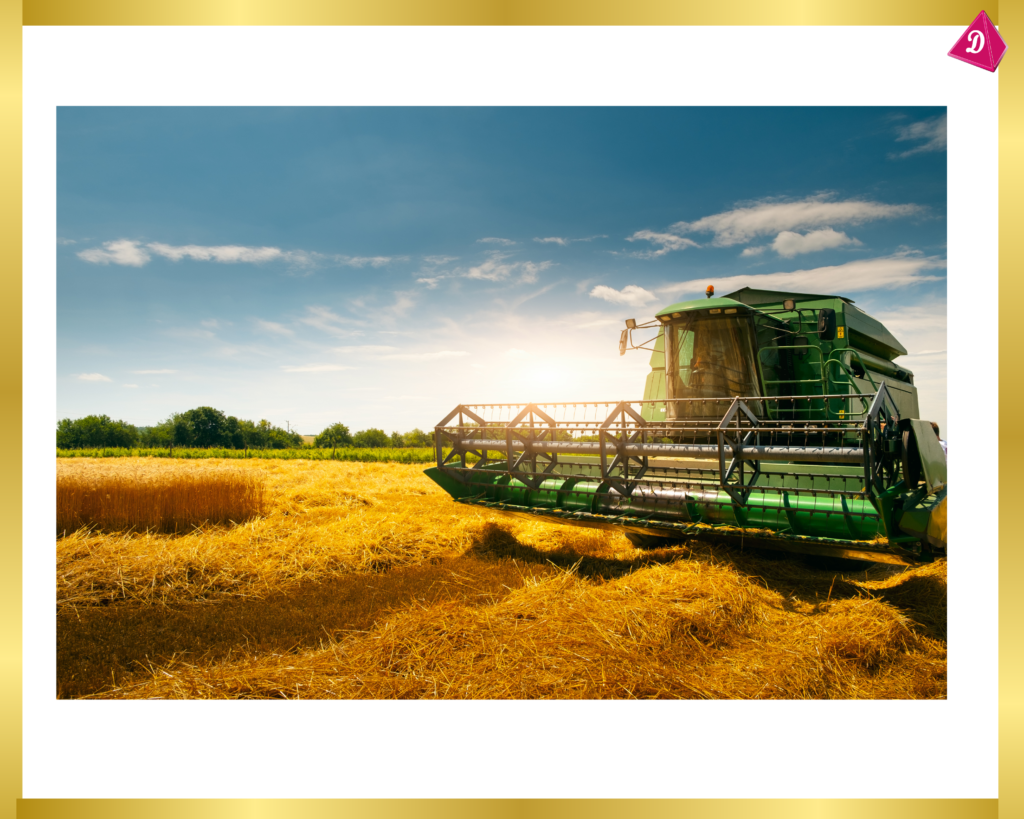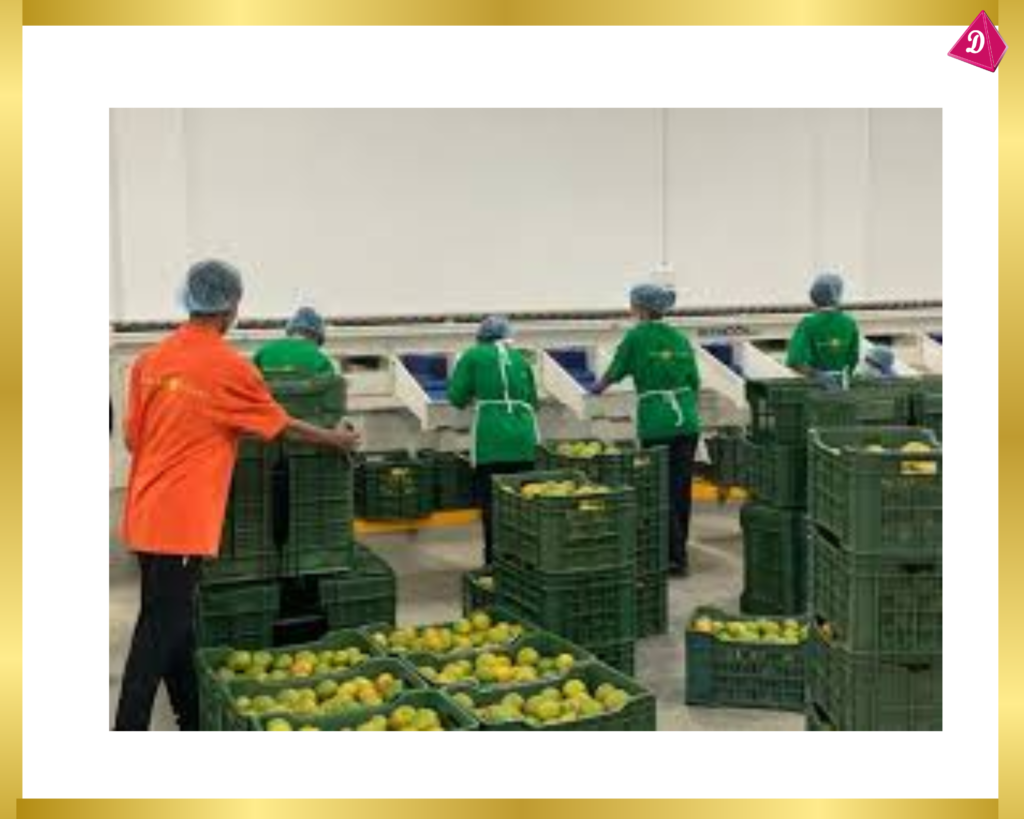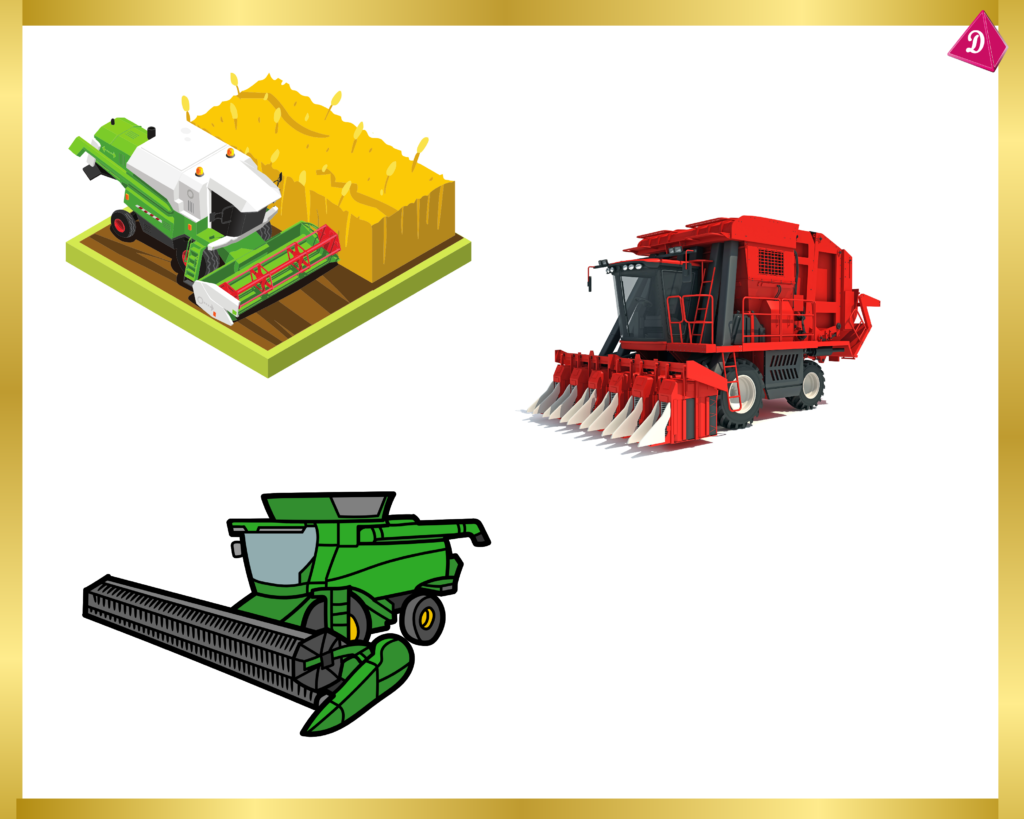Harvesting
key notes :-
Definition of Harvesting:
- Harvesting is the process of gathering mature crops from the fields.

Importance of Harvesting:
- Ensures the crop is collected at the right time for maximum yield and quality.
- Minimizes losses due to pests, diseases, and adverse weather conditions.

Signs of Maturity:
- Different crops have specific signs indicating they are ready for harvest.
- Examples: Change in color, hardening of seeds, drying of leaves, and specific moisture content.

Methods of Harvesting:
- Manual Harvesting:
- Using hand tools like sickles, knives, and shears.
- Suitable for small farms and crops requiring careful handling (e.g., fruits, vegetables).
- Labor-intensive and time-consuming.

- Mechanical Harvesting:
- Using machines like combines, reapers, and harvesters.
- Efficient for large-scale farming and reduces labor costs.
- Examples: Combine harvesters for grains, mechanical pickers for cotton.

Post-Harvest Handling:
- Cleaning: Removing dirt, debris, and damaged parts.

- Sorting and Grading: Categorizing crops based on size, quality, and ripeness.

- Drying: Reducing moisture content to prevent spoilage (e.g., sun drying, mechanical drying).

- Storage: Using proper facilities to store crops (e.g., granaries, cold storage) to maintain quality and prevent loss.

Timing of Harvesting:
- Harvesting at the right time ensures the best quality and maximum yield.
- Too early harvesting can result in immature crops, while too late harvesting can lead to overripe and spoiled produce.

Tools and Equipment:
- Traditional tools: Sickles, scythes, and baskets.
- Modern equipment: Combine harvesters, threshers, and balers.


Safety Measures:
- Using protective gear to prevent injuries during harvesting.
- Ensuring machinery is in good condition and operated safely.
Environmental Impact:
- Proper harvesting techniques can reduce waste and environmental impact.
- Avoiding overharvesting to ensure sustainable crop production.

Economic Importance:
- Harvesting is a critical stage in the agricultural cycle affecting farmers’ income.
- Properly timed and efficient harvesting can increase profitability and market value.

Let’s practice!

